








READ THE WASHINGTON
INFORMER YOUR WAY:
n In Print – feel the ink between your fingers of our Award Winning Print Edition
n On the Web – www.washingtoninformer.com updated throughout the day, every day


n On your tablet
n On your smartphone
n Facebook
n Twitter
n Weekly Email Blast – sign up at www.washingtoninformer.com

202-561-4100
For advertising contact Ron Burke at rburke@washingtoninformer.com

THE WASHINGTON INFORMER NEWSPAPER (ISSN#0741-9414) is published weekly on each Thursday. Periodicals postage paid at Washington, D.C. and additional mailing offices. News and advertising deadline is Monday prior to publication. Announcements must be received two weeks prior to event. Copyright 2016 by The Washington Informer. All rights reserved. POSTMASTER: Send change of addresses to The Washington Informer, 3117 Martin Luther King, Jr. Ave., S.E. Washington, D.C. 20032. No part of this publication may be reproduced without written permission from the publisher. The Informer Newspaper cannot guarantee the return of photographs. Subscription rates are $55 per year, two years $70. Papers will be received not more than a week after publication. Make checks payable to:
THE WASHINGTON INFORMER

3117 Martin Luther King, Jr. Ave., S.E Washington, D.C. 20032 Phone: 202 561-4100
Fax: 202 574-3785
news@washingtoninformer.com www.washingtoninformer.com
The Spring season is a sublime and often fruitful time of the year. The warmer weather, extended daylight, blooming flowers, and seasonal recreation all bring a significant jolt to our mental, and physical health. It is a season whose natural elements inspire a deeper sense of clarity within self, a reset on our health resolutions, and putting forth action behind our smaller goals, and immense dreams.
Personally, there is so much about the change of season, and rebirth of nature, that brings me to life just a little more. My journey of working to strengthen my overall health, learning to maintain a better peace of mind, and carefully navigating the world around me played a major role in the vision for this month’s health supplement edition. May is nationally dedicated to the observance of Mental Health Awareness, and this month we would like to present our audience with a few gems of critical information, helpful advice, and support to encourage self-awareness, while empowering our readers to better master their overall health.
...Informing you everyday in every way
PUBLISHER
Denise Rolark Barnes
STAFF
Micha Green, Managing Editor Ron Burke, Advertising/Marketing Director
Shevry Lassiter, Photo Editor
Lafayette Barnes, IV, Editor, WI Bridge DC
Jamila Bey, Digital Content Editor


Austin Cooper, Our House Editor Desmond Barnes, Social Media Stategist ZebraDesigns.net, Design & Layout
Mable Neville, Bookkeeper
Angie Johnson, Office Mgr./Circulation
REPORTERS
Kayla Benjamin, (Environmental Justice Reporter) Stacy Brown (Senior Writer), Sam P.K. Collins, Curtis Knowles, Brenda Siler, Lindiwe Vilakazi, Sarafina Wright, James Wright

PHOTOGRAPHERS
Shevry Lassiter, Photo Editor, Roy Lewis, Jr., Robert R. Roberts, Anthony Tilghman, Abdula Konte, Ja'Mon Jackson
At times, we all find ourselves losing grip and lacking a stable sense of control, particularly when considering our mental health, nutritional balance, and physical wellness. Over the past year alone, we have seen this play out in numerous ways within our communities and beyond. Respiratory illnesses, cancer diagnoses, and food insecurity rates causing undernutrition, for example, have all become increasingly prevalent issues across the D.C. Metropolitan area alone. Likewise, metropolitan cities and even suburban communities across the United States are seeing an influx of chaos at the hands of exasperated, anguished, and at times, outright mentally unstable populations of people. Long-term effects of the unprecedented health crisis of COVID-19, the dangers of a growing opioid epidemic, and a city riddled with crimes are truly symptomatic of numerous mental health, dietary, and emotional imbalances that have long rested beneath the distress.
Published in this month’s health supplement, our writers have contributed thoughtful pieces of content highlighting various aspects of mental health, nutrition, and wellness. From multiple angles of how mental health challenges can afflict our communities, to nutritional tips for better eating and health, and literary suggestions to further empower your mind, and wellness choices, the Washington Informer presents to you our May Health Supplement with tons of love, light, and embrace. We wish that you all stay safe, healthy, and most importantly, stay inspired through the process.
America’s mental health has reached a crisis, and with the beginning of Mental Health Awareness Month, efforts to raise the conscience of Americans are taking place nationwide.
The Georgetown University Center for Global Health Science and Security partnered with the Office of the D.C. Auditor to evaluate the data available to quantify the impacts of COVID-19 on mental health across the District of Columbia.
In the study released on April 23, researchers identified more than 50 datasets related to behavioral healthcare service needs, supply, and demand at the local, regional, and national levels.

Experts also found a notable increase in mental health diagnoses during the COVID-19 pandemic in D.C.
The researchers concluded that investments in behavioral health data systems could lay the foundation for early solid warning systems to identify crises and target responses across all levels of the behavioral system.
“Given the wide range of patient needs, care providers, and services offered, layered analysis and interventions are needed to understand ongoing and emergent needs related to behavioral health in the District,” the researchers determined.
“Accordingly, stakeholders involved in response need access to timely, publicly available data to inform these efforts.”
Meanwhile, experts note that mental health challenges like eating disorders have also increased.
According to a recent JAMA report, “a common misconception is that eating disorders affect a specific type of person: the
Our strength comes from the experience and knowledge of our volunteers,” she said.
Activists noted that Mental Health Awareness Month has received recognition since 1949, with advocates and practitioners across the country working to spread awareness.


Mental health screenings and other activities that support healthy lifestyles are planned throughout the month.
Also, advocates have continued efforts to reach more people with suicide prevention information and interventions nationwide.
media’s portrayals are not always accurate.”
In the United States, the organization said eating disorders already affect 28.8 million people, and those aged 12 through 25 comprise 95% of cases.
The National Eating Disorders Association (NEDA) reported that eating disorders are severe mental and physical illnesses affecting “all genders, ages, races, religions, ethnicities, sexual orientations, body shapes, and weights.”
These disorders have the second highest mortality rate of all mental health disorders, surpassed only by opioid use disorder, NEDA officials stated.
“Twenty million women and 10 million men in the United States will struggle with an eating disorder at some point in their lives,” said Sarah Chase, VP of Communications for NEDA.
“Moreover, a recent report in JAMA found that 22% of children and adolescents worldwide, or onefourth of young people, showed disordered eating.”
According to Chase, NEDA’s website has seen an 89% increase in traffic this year, and millions of Americans use the organization’s resources each month.
She said 81% of those visiting their site are new information seekers.
“Our chatbot and helpline have seen significant uptake this year, and we continue to offer vital screening tools for people who think they may have an eating disorder and want more information,” Chase stated.
Further, Chase noted that, in 2023, NEDA officials would appear in more than 50 communities across the United States, bringing hope and building strength.
“We’re here to ensure everyone has access to the support they deserve.
This year, the National Alliance on Mental Illness (NAMI) will celebrate with its “More Than Enough” campaign.
Throughout the month, NAMI invites all to share with the organization on social media thoughts on why individuals are “more than enough” by tagging @NAMICommunicate and using the hashtag #MoreThanEnough.
“It’s an opportunity for all of us to come together and remember the inherent value we each hold — no matter our diagnosis, appearance, socioeconomic status, background,
or ability,” NAMI officials said in a release.
“We want every person out there to know that if all you did was wake up today, that’s more than enough. No matter what, you are inherently
People
worthy of more than enough life, love, and healing. Showing up just as you are, for yourself and the people around you, is more than enough.”
WI @StacyBrownMedia
One of the many valuable lessons learned during the COVID-19 pandemic is that preparation for health-
care emergencies requires much more than most of us imagined. The scarcity of essential resources during the pandemic was a wake-up call. News media outlets reported the stories of front-line workers forced to put themselves at risk and vaccine shortages at clinics in economically challenged areas. In addition, as many suddenly discovered that their houses were too small to accommodate multiple family members simultaneously working and learning from home, the necessity of accessible public parks and green spaces became more apparent.
A strong Wi-Fi connection and an adequate data plan enabled many families to connect with doctors and stay current on their children’s academic progress. Food and transportation were also radically altered as increased demand and diminished supply catalyzed community organizations to develop clever solutions to help meet the needs of their communities.
Accessibility to treatment and care; job stability with livable wages; access to safe green spaces close to your home; food security and grocery stores with well-stocked shelves; reliable transportation are just some of the social factors that impact physical health and well-being.
At the height of the pandemic, many struggled to access vital resources due to shortages in supply—healthcare systems were stretched to the limit with increased demand. Now that President Biden has officially ended the public health emergency, healthcare providers are gradually increasing services to meet pent-up demand. Organizations like Amerigroup DC are helping Medicaid enrollees address the needs they care about most when it comes to being well in a holistic way.
As the COVID-19 outbreak shifts from a pandemic to an endemic, many government emergency resources and relief funds have run dry, leaving some grappling with unequal social drivers. The results have nega-
tively affected the health and wellness outcomes for people on Medicaid and Medicare.
The disruptions of the pandemic meant that many people were not able to see their doctors for scheduled check-ups, treatments, and services. In the aftermath of the pandemic, it is crucial to re-establish that schedule of annual checkups, vaccinations, and dental and vision appointments.
The pandemic taught us many things. We know more than ever how critical it is for Amerigroup DC to continue to collaborate with community organizations to address the underlying social needs that prevent people from being healthy.
And we also learned how having reliable healthcare coverage is essential.
If you are a Medicaid recipient, don’t miss out on important information. If you haven’t already, take time today to update your address,
At the height of the pandemic, many struggled to access vital resources due to shortages in supply — healthcare systems were stretched to the limit with increased demand.
phone number, and/or email address at districtdirect.dc.gov so that DHCF knows where to send your Medicaid renewal letter. If you need additional help, you can call the Public Benefits Call Center at 202-727-5355. n
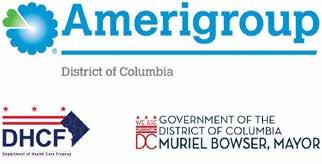

Jasmin Saville is Whole Health Director for Amerigroup DC


Vaccinated people* who received an updated COVID-19 vaccine were

14X less likely to die compared with those who received no vaccine
3X less likely to die compared with those who received only the original COVID-19 vaccine(s)
People ages 12+ who got their last COVID-19 vaccine dose before September 2022 should get an updated vaccine
To find your nearest vaccination site, visit vaccines.gov
 By Kayla Benjamin WI Climate & Environment Reporter
By Kayla Benjamin WI Climate & Environment Reporter
Living in a city often means accepting the bustle of car horns, construction and sirens. But daily exposure to unwanted sound, especially from loud or constant sources like highways or industrial sites, can have serious mental and physical health impacts. As a result of decades of racist urban planning, low-income communities and people of color in the U.S. tend to live closer to those sources.
To understand more about what noise pollution is and how it can impact our health, the Informer spoke with Dr. Erica Walker, an assistant professor of epidemiology at Brown University. She heads up Brown’s Community Noise Lab, which works to holistically explore the relationship between community noise and public health.
Kayla Benjamin, Washington Informer: Okay, to start, what is noise pollution?
Dr. Erica Walker:

So I am going to take a small step back: Sound is basically anything in our environment that we process through our auditory system. But noise is that part of sound that we have deemed—as individuals or communities—something that’s unwanted. So noise is defined as unwanted sound.
KB: You’ve been studying noise pollution for years now. Why does this issue matter so much?
EW: [Noise] is all around us, it’s ubiquitous. But at the same time, we really have the power to control only a little aspect of it—we can put our headphones in, we can put some earplugs in. But people are so powerless to do anything about it, especially if it’s coming from someplace else. If you’re dealing with it, and you can’t get relief from it, it’s hopeless. And it’s also negatively impacting our health.
KB: Tell me more about that—how does noise impact health?
EW: If you’re exposed to some sort of sound that you deem to be noise, if it’s loud enough, it can knock out your hearing, it can disturb your sleep. And if it can disturb your sleep, that’s where you start to get into those kinds of really negative health impacts.
When we’re in an environment and we’re exposed to some sort of sound that we process as noise, it sets up a stress response, or that flight or fight response.
But if you’re constantly stimulating that stress response over a longer period of time, that can lead to the manifestation of some pretty serious cardiovascular diseases ranging from hypertension, cardiovascular-related mortality, stroke, all kinds of things.
There’s also a lot of literature that shows that there are a lot of mental health and anxiety implications for being in noisy environments.
KB: Can you elaborate on those mental health implications?

EW: When you think about noise being a proxy for powerlessness, that can lead to a bunch of different things. If I can’t control the peace and serenity of my environment, that can lead to all kinds of stressors and anxieties. Whether or not they’re diagnosed, your body is not
able to achieve homeostasis, or balance.
When I work with communities, they’re like, ‘I can’t get a night’s sleep, I can’t predict when I’m going to have peace. I can’t control this. I feel like I reported it but nothing’s going to be done.’
So it’s abuse. It’s abusive.
KB: I’ve read some literature looking at noise pollution as an environmental justice issue. Can you tell me what you’ve found in your research?
EW: Some of those sources of sound, the big bucket items will be industrial sources and transportation sources like air, rail, highway road traffic. So when you think about [it], where are those things in our communities? Where are the major highways and the busy roads, where are the industrial [sites]? It’s usually placed in low income communities. We’ve created this, this is an intentional artifact of poor urban planning.
KB: What can be done about this, especially when it comes to highways and road traffic?
EW: Number one, you can practice better urban planning. And two, if you are going to put communities near major highways, then you need to think about some mitigation strategies for the people who live near there. I work with a community up in Massachusetts, where they were arguing for a sound wall. You go through cities, there are sound walls. They’re very expensive, they’re expensive to maintain, I think they cost a really crazy amount of money. But it’s a way to not only mitigate air pollution, but also mitigate sound pollution.
KB: What about on an individual level? Can anything be done beyond headphones and earbuds?
EW: That’s the sad part, because unless you have lots of money to afford a place not by a highway, there’s not much. You can buy mitigation strategies to reduce the sound—you can buy triple pane glass windows. You can organize and get your Department of Transportation to put up a sound wall in your community. [But] I’ve been working with the community that’s been doing this for the past ten years, and it hasn’t moved an inch. So if there is something that you can do, as an individual, you’re going to have to pay for it. And I think that that’s really unfair. n
The Informer spoke with Dr. Erica Walker, who leads the Community Noise Lab at Brown University.
Becker’s Healthcare, the goto source for health care decision-makers, announced it 2023 slate of Black Health Care Leaders to Know. The media platform equips health care leaders with the information and forums they need to learn, exchange ideas and further conversations about the most critical issues in American health care.
The executives were selected for fostering positive patient experiences, paving the way for the next generation of leaders, and promoting health equity. The DC-area executives from the District of Columbia Hospital Association’s member hospitals on the prestigious list include:
programs of the association. She also takes ownership of the organization’s legislative advocacy, fiscal business, operations, patient quality and safety, communications, community engagement, grants and legislative relations.
Ms. McGuire offers strategic oversight and guarantees alignment of organizational goals. She manages external-facing operations that uphold strategy, new initiatives and market development in the marketing and communications, community
engagement, and advocacy and government arenas. Ms. McGuire has been with Children’s National since 2011.

Ms. Washington first joined
MedStar Washington Hospital Center more than 20 years ago as a clinical manager. She has since worked her way up to her current role as senior vice president and chief nursing officer. Her leadership has resulted in the hospital earning the Pathway to Excellence designation from the American Nurses Credentialing Center in 2017.
The District of Columbia Hospital Association is a unifying force working to advance hospitals and health systems in the District of Columbia by promoting policies and initiatives that strengthen our system of care, preserve access and promote better health outcomes for the patients and communities they serve.


1152 15th Street, NW | Suite 900 | Washington, DC 200051723 | 202/682-1581 | dcha.org
Jacqueline D. Bowens President and CEO of the District of Columbia Hospital Association

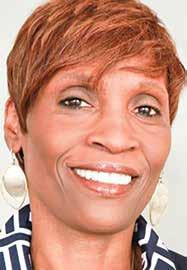
Ms. Bowens is responsible for overseeing the budget, staff and
Ms. Jenkins assumed the role of CEO at Howard University Hospital in February 2020. She brings more than 20 years of health care experience to the position. She serves as a member of the American Hospital Association’s Regional Policy Board 3 and volunteers for the American Heart Association and the March of Dimes.


If you are struggling to prioritize your health due to life’s demands, you are not alone. Managing a chronic illness like diabetes can be particularly challenging when basic needs like housing and food are uncertain. This is where Community Health Workers (CHW) come in. By providing free access to quality healthcare and social services programs, CHWs help bridge the gap between medical practices and communities in need.
CHWs provide free access to quality healthcare and social services programs. They understand the cultural
contexts of the residents they serve and can identify their unique health and social service needs. In addition to identifying needs, CHWs offer a range of support services including helping residents enroll in health and social service programs, referring them to medical transportation and other types of assistance, providing social support, and guiding them in their personal health education.
Prince George’s County residents ages 18 years or older can apply for Community Health Worker services by visiting one of the locations pro-

5
are
vided below, calling 301-889-4707, or emailing CHWSupport@co.pg.md.us. Within two business days of applying, a CHW will contact the resident and conduct a needs assessment to determine their specific healthcare and social service needs. This may involve asking a series of questions to better understand the resident’s current health status, as well as their access to housing, food, transportation, and other basic needs. Based on this assessment, the CHW will work to identify the specific services and resources that will best meet their
County needs. After helping the resident enroll in these programs, the CHW will follow up to ensure that everything is going smoothly and to provide ongoing support as needed.
Residents can visit any of the locations listed below to meet with a Community Health Worker in person:
• Access Wholistic and Productive Living (AWPL)
3611 43rd Avenue, Brentwood, MD 20722
Tuesday, Thursday, and Friday from 9 AM - 4 PM
• Community Outreach & Development CDC

4719 Marlboro Pike, Suite 104, Capitol Heights, MD 20743
Monday – Friday from 9 AM – 5 PM
• Greater Beulah Baptist Church
6056 Central Avenue, Capitol Heights, MD 20743
Monday – Friday from 9 AM – 4 PM
• Family and Medical Counseling Service (FMCS)*
5936 Martin Luther King, Jr. Highway, Seat Pleasant, MD 20743
Wednesday and Thursday from 9 AM - 4 PM
• Truly Blessed Health & Wellness Center*
10764 Rhode Island Ave, Beltsville, MD 20705
Monday – Thursday from 9 AM5 PM and Friday from 9 AM -1 PM
• Langley Park Multi-Service Center
1401 East University Boulevard, Hyattsville, MD 20783
Tuesday and Thursday from 9 AM - 4 PM
*You must be a current patient to receive CHW services at this location
Through a multipronged campaign, Prince George’s County is committed to serving the community and employing community members as CHWs to help close the gap in healthcare disparities and ensure happiness and health among local residents. n




Opioid-related overdose deaths in the District have risen steadily in recent years and the pandemic exacerbated the problem, with lockdowns initially making it harder to access addiction services. In addition, a large portion of drugs — including heroin, cocaine, MDMA and methamphetamine — are now being laced with fentanyl, a synthetic opioid that is 50 to 100 times more potent than morphine.
Last year, there were 427 opioid-related overdose deaths in the District. According to the Office of the Chief Medical Examiner, 95% of those deaths included the presence of fentanyl.
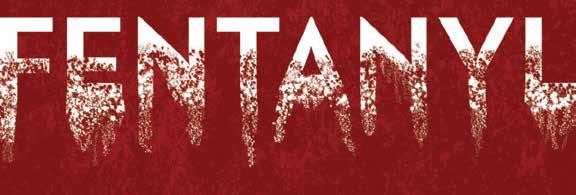
DC’s Department of Behavioral Health (DBH) and its community partners have announced the continued expansion of its naloxone distribution program and the launch

of a new campaign to encourage treatment for those suffering from addiction. Both initiatives are part of LIVE.LONG.DC. 2.0, the District’s strategic plan to reduce opioid use, misuse, and related deaths.
DBH makes naloxone, a life-saving medication used to reverse an opioid-related overdose, widely available and easy to get for free, without a prescription or ID required in pharmacies and at community sites. The program has grown from a handful of initial distribution sites to nearly 40 pharmacy locations and over 120 community organizations in all eight Wards.
In addition, in 2020, DBH launched a unique naloxone distribution service. By texting the words LiveLongDC to 888-811, District residents get a message back with a link to a map of the locations where they can pick up naloxone. Recently, an option for free home delivery and mail delivery was added to the service.
“Naloxone should be near at hand like any lifesaving medication. Family, friends, and others in the community can use naloxone to save someone who is overdosing,” said Dr. Barbara J. Bazron, Director of the Department of Behavioral Health. “We want all District residents to be ready to save a life and carry naloxone.”
Recognizing that a substance use disorder is a disease and that users often must seek treatment multiple times as part of their recovery journey, DBH has launched a new public education campaign designed to encourage users to try again at treatment with the hope that “this time can be different.” The campaign highlights DBH’s comprehensive set of treatment supports, including:
• Free substance use disorder treatment, available seven days a week at sites across the District;

• Three medications (methadone, buprenorphine and naltrexone) proven effective at treating the disease of addiction;



• Enhanced care coordination so that individuals receive comprehensive care;





• Peer counselors who have been there, and can support an individual through treatment and recovery; and






• Transportation, recovery housing and other support services.


“We need DC residents with substance use disorders to know that DBH has the services and

supports to help them succeed,” said Bazron. “We know that treatment works, and recovery is possible.”
Information about the District’s recovery services is available online at MyRecoveryDC.org or by calling the 24-hour Access Helpline at 1-888-793-4357 (7WE-HELP).





Enjoying more fruits and vegetables each day is one of the single best things we can do to improve our health. I’ve pulled together my favorite produce hacks that will hopefully help you do just that.
• Elevate those easy salad kits by adding one or two more plant ingredients! For example, add a sliced pear and some blue cheese
or roasted almonds to a Pear Gorgonzola Salad kit. Add diced avocado and black beans to your Southwest Chopped Salad Kit and add fresh berries and toasted walnuts to a Sweet Kale Salad Kit.
• Certain fruits and vegetables make great edible vessels for appetizers and entrees!

Mini sweet bell peppers cut in half work great as edible containers for appetizers, bell peppers can hold stews, casseroles, or other mixtures. Tuna or chicken salad can be served in an avocado half. Appetizers can be served on dried or fresh apricot halves, kiwi or apple slices, cooked mushroom caps or potato slices and more!
• Start your day the veggie way!
Be inspired by the foreign countries that serve vegetables at breakfast. For example, every time you enjoy an egg dish, automatically add some veggies to it, choose from tomatoes, onions, peppers, avocados, spinach or kale, broccoli, zucchini and mushrooms! Spinach works really well in smoothies because it has a mild flavor, but you might want to avoid adding it to deep blue/red colored smoothies because Green + Blue/Red = Brown. Berries are the #1 cause of brown smoothies.
• Fruit makes every breakfast better in taste, color and nutrition!
Choose from fresh, frozen or dried fruit for your oatmeal or overnight oats, yogurt and chia pudding, smoothies, toast and cereal.
• Discover the mushroom blend trend!
Elevate the moisture and umami in your ground meat dishes by blending ground meat with finely chopped mushrooms. Mushrooms complement the flavor of meat and extend the servings!
• Elevate grilled cheese sandwiches by adding fruits and vegetables like apple and pear slices, sauteed spinach, kale or mush-
rooms, tomato slices, avocado or blackberries or strawberries.
• Cheeseboard-friendly fruits and vegetables add crunch, color, flavor and nutrients and add a wonderful complement to cheese, deli meat and crackers.
• Use fruits and veggies as “dippers” for your favorite dips and fondue.
Consider carrot coins, sliced apples, zucchini and cucumbers, jicama and bell pepper pieces for the veggies.
• Add veggies and fruit to your meat or seafood kabobs to add flavor, color and nutrients and it will extend the amount of servings you get from a pound of Meat/Seafood too!
• Take your mac & cheese up a nutritional notch by stirring in some veggies. Homemade or from a box, mac & cheese pairs perfectly with sauteed spinach or kale, lightly cooked broccoli or cauliflower florets or roasted zucchini or butternut squash.
• Pump up your Pizza with produce!
Add pizza-friendly produce like mushrooms, peppers, zucchini, spinach or kale, artichoke hearts, cherry tomatoes, broccoli, egg-
plant, red onions, arugula, olives or pineapple to your pizza to compliment or replace any meat toppings. n

Sincerely, Berries



Summer is fast approaching, which means plenty of barbecues, pool days, and family vacations! However, amidst the summer fun, it’s easy to become busy and forget to prioritize our emotional wellness. Emotional wellness refers to how well people can handle life’s challenges and adapt to change.1 Limiting stress is critical to having emotional wellness, which is important for overall health.
Here are some key strategies to help reduce stress at any age:
• Stay active. Physical activity releases feel-good endorphins and other natural brain chemicals that can improve your well-being. Consider going to the gym, joining a workout class, or taking short walking breaks several times a day. Any form of physical

activity is a powerful tool for channeling stress.
• Get quality sleep.
Often, we sacrifice sleep to fit in everything we want to do in our day, but sleep is how our brain and body recharge. Take steps to make sure you regularly get a good night’s sleep. Adults should sleep at least seven hours each night, while teenagers should average between eight and 10 hours.2
• Connect with others.
Social connections powerfully impact our health, and it’s important to maintain healthy relationships with supportive friends and family. If you’re feeling stressed, don’t isolate yourself — friendship and laughter can instantly make you feel better.
• Nourish your body.
A healthy diet can help you think clearly and feel more alert. It’s im-
portant to eat well and nourish your body with fruits, vegetables, and whole grains. Avoid unhealthy habits such as drinking alcohol, smoking, or using illegal substances.
• Take time for you. Allow time or space to rest or do something that makes you happy. Be mindful of yourself and accept that it’s OK to say no if you are feeling overwhelmed and have too much on your plate.
• Seek counseling. Sometimes, stress may be too much to handle on your own. Counseling or therapy can help you identify stress triggers and learn new coping methods.3 Once you know where your stress is coming from, it can be easier to deal with. It also can be helpful to reframe your thinking about stress itself.4
CONTINUED ON HS-15
Stress is the human body’s natural response to pressure, and stress responses, such as faster heart rate and breathing, evolved to improve performance in stressful situations. Remind yourself that stress is normal and everyone faces stress in their lives. However, the key is knowing how to manage stress so that it doesn’t take a toll on physical and mental health. These tips can help you restore calm, feel more in control, and help maintain your emotional wellness all summer.
The information in this article is to help you learn more about this topic. It is not to take the place of your health care provider. If you have questions, talk with your healthcare provider. If you think you need to see your healthcare provider because of something you have read in this information, please contact your healthcare provider. Never stop or wait to get medical attention because of something you have read in this material.
Sources:
1. “Emotional Wellness Toolkit,” National Institutes of Health, https://www.nih.gov/health-information/emotional-wellness-toolkit
2. “How Much Sleep Do I Need?” Centers for Disease Control and Prevention, https://www.cdc.gov/sleep/about_ sleep/how_much_sleep.html
3. “Stress Relievers: Tips to Tame Stress,” Mayo Clinic, https://www.mayoclinic.org/ healthy-lifestyle/stress-management/ in-depth/stress-relievers/art-20047257

4. “How to Relieve Stress: A SixStep Plan to Feeling Good,” John Hopkins Medicine, https://www.hopkinsmedicine.org/ health/wellness-and-prevention/howto-relieve-stress-a-6-step-plan-to-feeling-good
All images are used under license for illustrative purposes only. Any individual depicted is a model n
There are many ways to improve your mental wellness, and AmeriHealth Caritas District of Columbia (DC) has programs that can help you achieve your goals.

Emotional support via text allows you to text with a coach any time you need it, 24 hours a day, seven days a week. You can receive support for challenges big or small, such as anxiety, trouble sleeping, relationship problems, grief, pain, and life transitions.
• If you are 21 or older, use Ginger. Download the Ginger App from Google Play™ or the Apple App Store®. In the app, tap Get Started, then tap Verify with name, DOB, and ZIP code. Follow the instructions sent to your inbox.
• Enrollees ages 13 – 20 should text 886-886 and use referral code “AmeriHealth” during enrollment to start texting with a MindRight support coach now.
AmeriHealth Caritas DC also offers fitness classes through the Active&Fit® program. With Active&Fit, you can join live virtual classes, watch workout videos on your own time, and even get a gym membership. Like all of AmeriHealth Caritas DC’s benefits, there is no cost for enrollees to participate in the Active&Fit program. For more information and to join our MOVEment, visit the AmeriHealth Caritas DC Healthy Living Classes webpage. n

Spring is upon us, as with warmer weather comes everyone going outside the house and into restaurants, ripping and running from work to events, and fitting in just enough sleep along the way. Sure, life is a thrill, and it can be far less fun spending hours in our kitchen preparing and cooking our own balanced meals, while jumping in bed at appropriate times that will provide us the rest that we need. But without proper nutrition and wellness practices, are we
really living or just struggling to catch up with the experiences that a healthier, rejuvenated version of ourselves could have?
Let’s take a look at some common and uncommonly known nutrition and wellness tips with expert advice straight from the desk of nutritionist, Charmaine Jones, MS, RDN, LDN, and Founder and Owner of Food Jonezi.
DID YOU KNOW that a diet full of nutrient-rich foods like fruits and vegetables, along with omega-3 fatty acid rich foods help stabilize your mood, creating fewer mood swings and an improved ability to focus? Likewise, natural, unprocessed foods largely help to prevent symptoms of depression.
DID YOU KNOW that not all organic food is nutritionally better than conventionally grown foods?
What Is Organic?: The USDA Organic label on various foods choices whether produce, meats, etc., indicates that the food item has grown or been handled without using genetically modified organisms, which the organic standards expressly prohibit. USDA standards vary based on the food type. When we see the USDA, or certified organic seal on a food item, that indicates that the product is at least seventy-percent natural.
Nutritionist Perspective (CJ) - “The Dirty Dozen”: Nutritionally, organic and conventionally grown foods are no different nutrient-wise. However, the process is different. There is a very helpful list created by the Environmental Working Group (EWG) which provides the twelve foods that should be purchased organic due to the amount of synthetic pesticides used to grow the fruits and vegetables.
The “Dirty Dozen” of fruits and vegetables that are best to purchase in it’s organic form based on the EWG’s 2023 Shopper’s Guide to Pesticides in Pro duce, are; Strawberries, Spinach, Kale/Collard/Mustard Greens, Nectarines, Apples, Grapes, Bell Peppers/Hot Peppers, Cherries, Peaches, Pears, Blueber ries, and fresh Green Beans.

DID YOU KNOW that sugary drinks are the most fattening products in our modern diet? A high intake of sugar, whether in our drinks, or food sources, often causes a slew of health issues within the body that become harder to reverse later.
Nutritionist’s Insight (CJ): tion. Not only that, but when your body is taking excess sugar, it causes a signif icant amount of weight gain. What people don’t realize is that weight gain is so critical in this [circumstance], because when someone gains weight, those fat cells release a toxin in the body. That toxin causes inflammation. That’s why weight gain becomes a huge factor in all of this. If you drink a lot of sugary drinks, it definitely causes weight gain, it definitely leads to these toxins being released in your body, it leads to inflammation, it decreases your immune system, it leads to cardiovascular disease, it causes insulin resistance which leads to diabetes, high blood pressure which they call the silent killer, it clogs the arteries, [and more].”
Quick Tip: With every meal or snack, add some proteins. Even if you are only eating grapes or a type of fruit, it can spike up your blood sugar, and quickly drop it whether it is from natural or added sugar, consequently leaving you unsatisfied. The American Heart Association recommends just nine teaspoons of added sugar a day, and just six spoons for women and children. However, the average American intakes 17 teaspoons of sugar or more. Stay alert to your sugar intake! n
Nutritionist Perspective (CJ): Fruits and vegetables and omega 3’s are powerhouses and good resources for overall health, and important to increasing your mood and brainpower, specifically omega 3’s.
Omega 3’s have a great ability to increase your overall blood flow to your brain which improves learning abilities, memory, and overall cognitive function. omega 3 coupled with fruits and especially green leafy vegetables, are great for improving brain function. Omega 3’s help prevent proteins called beta-amyloids, that as you age build up, and clump in our brains that often cause Alzheimer’s disease.
“Green leafy vitamins, for example, are rich in Vitamin K, lutein, and beta carotene for example, all help increase our mood, and blow flow throughout our bodies, especially Vitamin K. When you are first born you get a shot of Vitamin K which helps make the blood flow through your body consistently, and fluently. So when your blood flows properly throughout your body, especially to your brain, it definitely gives your body that boost.”

Best Foods For Omega 3 Intake: Omega 3 fatty acids are best retained within our diets, primarily through eating fatty fish including sardines and anchovies, but also higher quality fish including salmon, swordfish, or tuna. Additionally, green leafy vegetables, and fruits like berries are awesome for the bloodstream and brain functioning.
*Stay away from deep-fried, and fried foods, as it adds an extra layer of unnecessary fat which can be detrimental to your heart health. n
DID YOU KNOW Intermittent fasting is a great method to accomplish weight loss, improve heart health, improve brain health, lower the risk of type II diabetes, and reduce the risk of cancer?
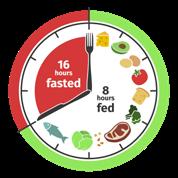
What is Intermittent Fasting?: Intermittent fasting is a dietary schedule or routine largely dedicated around when you eat food, rather than what you eat. That means, you will eat during a specific period or time frame during the day, and neglect to eat during the remaining hours until your eating window returns.
What Are The Benefits?:

After hours without food, the body tends to exhaust a sugar reserve and consequently, begins burning off fat. During that period, some benefits of fasting are;

1. Improves the digestive functions: During the period where you are not eating, your digestive system is given a rest, taking time to repair and rebuild.
2. Improves memory and thinking, Like a form of detoxing - It allows the digestive system to rest, giving the body a moment to strengthen its cognitive functions.

3. Helps to improve blood pressure - Intermittent fasting helps get your body back on track, as it is great for reducing Type II diabetes. When you are fasting, it is similar to your body flushing a lot, typically allowing the body to use the bathroom more often during the fasting period, as you will tend to eat less calories during this time, and lose weight, which also helps reduce a person’s chance of getting diabetes or high blood pressure.
Breaking Fast: “When you intermittent fast for a certain period, once you break your fast, you have to still maintain eating every three to four hours in well-balanced, small meals. You cannot break your fast and go to Popeyes, or eat every, and anything. It is a very disciplined diet. Intermittent fasting does require a lot of preparation and discipline. You should always have someone who can guide you through [your] fast, because that first moment when you break your fast, is the most critical part of the [process]. You don’t want to break your fast, with some fast food. Break your fast with a broth, or some soup. Remember, your digestive system was at rest for a [certain number] of hours. You just can’t eat something that is high in fat, you have to slowly transition back into eating.” n
America’s beverage companies are offering more choices with less sugar.

From sparkling and flavored waters to zero sugar sports drinks, teas and more — nearly 60% of beverages sold now have zero sugar. It’s all part of our commitment to support Americans in their efforts to find balance. And we’re delivering. Learn more at BalanceUS.org.

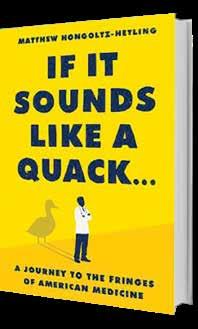 By Matthew Hongoltz-Hetling
c.2023, PublicAffairs
$29.00 / 336 pages
By Matthew Hongoltz-Hetling
c.2023, PublicAffairs
$29.00 / 336 pages
Everything hurts. Your joints, your bones, your skin, even your hair hurts. You don’t want to move – which is fine, since you barely can. So what do you reach for? A phone to call the doctor or, as in the new book “If It Sounds Like a Quack...” by Matthew Hongoltz-Hetling, does that idea just make you wanna duck?
If you’ve ever fallen sick, broken a bone, or needed a doctor’s excuse for work, you know that “America’s health care ecosystem is... full of wealth and nonsense...”
Understanding it is impossible. Working your way through it, even more so, and “millions of Americans” don’t even want to try. Instead, they reach for an unproven, alternative “One True Cure” that very rarely works. Doing so, says Hongoltz-Hetling, is a personal prerogative, a freedom, somewhat like consuming sugary drinks, not getting vaccinated, avoiding a seatbelt, and using recreational drugs. Those are things one person does that can ultimately affect the population as a whole.
So is there a solution to a problem when “public health and individual freedom... collide?”

That’s hard to answer. Some alternative medicines have been proven, sort of. Others do nothing, or make an illness worse. Still, big bucks are spent each year on unproven cures, pills, herbs, lasers and caustic cocktails, and the government chafes.
Hongoltz-Hetling found Toby, for instance, a Montana man who sold “herbal concoctions” that he claimed could heal anything, until the FDA said he couldn’t make that claim anymore. Robert in Utah, an ambitious man of God, embraced a debunked 19th-century cure. Alicja, born and raised in Poland, immersed herself in hirudotherapy, or the use of leeches, which challenged the FDA for a label. Dale and Leilani of rural Wisconsin believed that prayer could cure all, until they lost their youngest daughter to ketoacidosis. Larry was certain that lasers stopped disease in its tracks, but the FBI disagreed. The “alien who lived in Jim Humble’s skin” claimed that only ancient, other-worldly medicine was right.
Meanwhile, says Hongoltz-Hetling, millions of Americans aren’t “opting out of health care.... just professional health care.”
Are you uncomfortable yet? Because you should be; author Matthew Hongoltz-Hetling should make you squirm here – but you’re also going to laugh.
For sure, “If It Sounds Like a Quack...” is wry, irreverent, and hilarious, poking equal fun at presidents, patients, and quack practitioners alike, while it makes a big point: faux medicine is relatively harmless, until it’s not and someone gets hurt. And people do, often, but as Hongoltz-Hetling shows, government oversight (or overreach, depending on your viewpoint) is ineffectual and can’t always save people from themselves.
“We can all make fun,” says Hongoltz-Hetling – and he does in these stories that read like a collection of novelettes – but he never loses sight of reality: One True Cures have “serious consequences.”
Before you click on that online ad, before you buy another bottle of herbs or an untested medical method, reach for “If It Sounds Like a Quack” first. Reading it might make you stay safe. It sure can’t hurt. n
336 pages
It’s over.
The last page is read, the credits are rolling, your plate is clean, you’ve said your good-byes for tonight, for this weekend, for this month, forever. It’s time to turn your back and walk away – or is it? In “Quit” by Annie Duke, learn when to say alright and when to say adieu.
Quitters never win, quit the process and you’re quitting the result, nobody said it would be easy, blah blah blah. Platitudes aside, you’re done messing with that thing and you’d like to throw in the towel but you’ve invested so much time and quitting is for sissies, blah blah.
We’ve all heard those sayings before but, says Duke, believe it or not, a premature ending can be the best thing that could happen sometimes... but not always. It truly depends.
Knowing when to quit, she says, is an important life skill but it’s not as glamorous as stick-to-it-iveness. People tend to remember those who persevere, no matter the outcome, but they don’t generally remember those who get off the merry-go-round before the music stops. Still, she says, if she was going to teach someone to make better decisions, “quitting is the primary skill” she’d pick.
“Trying something and having the ability to quit is vital to how we all live our lives.”
So how do you know when it’s time to stop the foolishness?
Learn to re-frame your decisions to determine whether it’s better to stay or go; if it’s a close call, the latter’s probably the better option. Remember that public opinion isn’t always right. Quit when you’re ahead if the future looks bleak, and be aware of a nasty phenomena called “loss aversion.” Also watch for “sunk cost,” which can cause you to continue because you think things just have to get better eventually. They won’t.
Set a list of “kill criteria” before embarking on a project. Don’t be too optimistic. And remember that there’ll always be times when the choice to quit is yours, and times when “the world makes the choice for you.”
In the last almost-three years, you’ve probably asked yourself a dozen times why. You don’t need a subject, sometimes “why” is the entire question and “Quit” is the answer.
It’s not an easy one, though. Author Annie Duke breaks the dilemma down in four sections that help readers learn how to make the right decision, and that empower them to take a possibly-unpopular action. These are hefty sections, too, with meaty words for you and for your too-loud, often-wrong inner naysayer.


The lessons imparted are ones we all need to understand fully, but they’re not the only things you’ll find in this book. Duke bolsters her advice with pertinent anecdotes that are entertaining, even if you’re not in need of a coin to flip any time soon.
Read this book for that amusement or, if you need to know how to do the right thing at what looks like the wrong time, read it for instruction. Either way, “Quit” is good, full stop. n
What if my cancer spreads? I can’t recover? I can’t make it to my son’s wedding?

What if you can?
World-leading treatment is closer than you think: right in your community. Where trailblazing teams of cancer specialists and scientists work together to ask “what if”— discovering how cancer grows and new ways to treat it; bringing 50 years of research and expertise at the Johns Hopkins Kimmel Cancer Center closer to your home. So your path forward has fewer questions…and the answers you need.
World-leading cancer care in your community. Sibley Memorial Hospital • Suburban Hospital hopkinscancerdc.org

Bank of America has convened the American Heart Association, American Diabetes Association, American Cancer Society and the University of Michigan School of Public Health for an innovative, signature initiative to improve health outcomes in communities of color. Since 2021, Bank of America has invested more than $66 million to address needs related to health in the communities it serves; addressing barriers to healthy eating and supporting mental health initiatives for people of color.

Visit us at bankofamerica.com/about.
